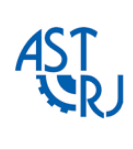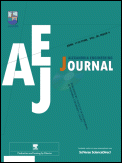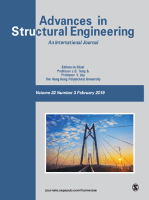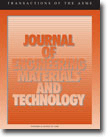
World Journal of Engineering
Scope & Guideline
Pioneering Insights Across Diverse Engineering Disciplines
Introduction
Aims and Scopes
- Innovative Engineering Applications:
The journal publishes research that explores novel applications of engineering principles across various sectors, including civil, mechanical, electrical, and environmental engineering. - Advanced Materials and Manufacturing Techniques:
A core area of focus is the development and optimization of advanced materials and manufacturing processes, including additive manufacturing, composite materials, and nanotechnology. - Sustainability and Environmental Engineering:
Research addressing sustainable engineering practices, environmental impact assessments, and the use of recycled materials in construction and manufacturing is a significant aspect of the journal. - Modeling and Simulation in Engineering:
The journal emphasizes the use of computational modeling and simulation techniques to predict and analyze engineering phenomena, enhancing design and operational efficiencies. - Machine Learning and Data Analysis in Engineering:
The integration of machine learning algorithms and data analysis techniques in engineering applications is a prominent theme, focusing on predictive modeling and optimization. - Structural Engineering and Geotechnics:
Significant contributions are made in the areas of structural analysis, geotechnical engineering, and the performance evaluation of materials under various loading conditions.
Trending and Emerging
- Integration of Artificial Intelligence and Machine Learning:
There is a growing emphasis on applying AI and machine learning to optimize engineering processes, enhance predictive maintenance, and improve design methodologies. - Sustainable Engineering Practices:
Research focusing on sustainable practices, including the use of recycled materials, green construction techniques, and eco-friendly manufacturing processes, is rapidly gaining traction. - Smart Infrastructure and IoT Applications:
The incorporation of Internet of Things (IoT) technologies in infrastructure design and management is an emerging theme, facilitating smarter cities and efficient resource management. - Advanced Composite Materials:
The exploration of advanced composite materials for various engineering applications is becoming increasingly popular, particularly in aerospace, automotive, and construction industries. - Numerical and Computational Methods:
There is an upward trend in the use of advanced numerical methods and computational simulations to solve complex engineering problems, particularly in fluid dynamics and structural analysis. - Health Monitoring and Diagnostics in Engineering:
Research focusing on health monitoring systems and diagnostic tools for infrastructure and machinery is emerging, addressing the need for preventive maintenance and safety assessments.
Declining or Waning
- Traditional Structural Materials:
Research on conventional materials such as standard concrete and steel structures is becoming less prominent as the field shifts towards innovative materials and composites. - Basic Mechanical Engineering Principles:
Topics focusing solely on fundamental mechanical engineering principles without integration of advanced technologies or sustainability considerations are being published less frequently. - Conventional Energy Sources:
Studies centered on traditional energy sources, such as fossil fuels, are declining as the focus moves towards renewable energy technologies and hybrid systems. - Static Analysis in Structural Engineering:
The prevalence of research dedicated to static analysis methods is decreasing, as dynamic analysis and real-time monitoring technologies gain more attention. - Standardized Testing Protocols:
The journal has seen a reduction in articles solely focused on standardized testing protocols without innovative approaches or applications in real-world scenarios.
Similar Journals

Advances in Science and Technology-Research Journal
Fostering Collaboration, Advancing ScienceAdvances in Science and Technology-Research Journal, published by Lublin University of Technology in Poland, is an esteemed open access journal that has been enriching the scholarly landscape since 2012. With an ISSN of 2080-4075 and an E-ISSN of 2299-8624, this journal is dedicated to disseminating cutting-edge research across Computer Science, Engineering, Environmental Science, and Materials Science. Recognized within the Q3 quartile in 2023 across various fields, it holds respectable rankings in Scopus, including Rank #184 in General Engineering and Rank #122 in Materials Science. The journal’s commitment to open access fosters wider dissemination and engagement within the scientific community, making it a vital resource for researchers, professionals, and students alike. As the fields of science and technology continue to evolve, this journal serves as a vital conduit for innovative ideas and collaborative research, inviting contributions that push the boundaries of knowledge.

International Journal of Engineering Research in Africa
Empowering Engineering Innovation Across AfricaThe International Journal of Engineering Research in Africa is a pivotal academic resource for researchers, professionals, and students interested in the multifaceted field of engineering within the African context. Published by TRANS TECH PUBLICATIONS LTD, this journal facilitates the dissemination of innovative research, covering a myriad of topics in engineering, from advanced materials to sustainable practices. With an ISSN of 1663-3571 and E-ISSN 1663-4144, this publication not only fosters scholarly communication but also contributes to the global engineering discourse, as evidenced by its current Q3 ranking in the Engineering (miscellaneous) category in 2023. Operating from its base in Switzerland, the journal has been actively publishing since 2010 and continues to play a vital role in the advancement of engineering knowledge, particularly in the African landscape. Although it does not offer an open access model, the journal's commitment to quality research ensures that it remains a valuable asset for those seeking to understand and innovate within the engineering sector. Its integration in Scopus with a rank of #175 out of 307 in General Engineering further underscores its relevance and impact in the engineering community.

JOURNAL OF MATERIALS ENGINEERING AND PERFORMANCE
Exploring the Dynamics of Material PerformanceJOURNAL OF MATERIALS ENGINEERING AND PERFORMANCE, published by Springer, serves as a vital resource for researchers and professionals in the fields of materials science, mechanical engineering, and mechanics of materials. With an ISSN of 1059-9495 and E-ISSN of 1544-1024, this journal boasts a commendable track record since its inception in 1992 and is set to continue providing valuable insights until 2024. Positioned in the Q2 quartile of its categories, the journal is ranked #246 in Mechanical Engineering and #168 in Mechanics of Materials according to Scopus, reflecting its commitment to high-quality research. While currently not adopting an open access model, it remains accessible to academic professionals and students eager to advance their knowledge in the rapidly evolving domain of materials engineering. The scope encompasses innovative research focused on material performance, engineering applications, and technological advancements, making it an indispensable tool for those at the forefront of the field.

Alexandria Engineering Journal
Unlocking the potential of engineering through shared discoveries.Alexandria Engineering Journal is a premier open access publication dedicated to advancing the field of engineering. Published by ELSEVIER and headquartered in Amsterdam, the Netherlands, this journal has been at the forefront of disseminating innovative research since its inception in the year 2000. With its impressive Q1 ranking within the Engineering (miscellaneous) category and a notable position as #20 out of 307 in the Scopus rankings, it serves as a vital resource for scholars and practitioners alike, ensuring that cutting-edge findings reach a global audience. The journal is accessible to all since adopting open access policies in 2010, thereby facilitating the sharing of valuable insights without barriers. As we approach the convergence of years from 2000 to 2024, the Alexandria Engineering Journal continues to play a pivotal role in shaping engineering practices and underpinning significant advancements in the field.

ADVANCES IN STRUCTURAL ENGINEERING
Advancing the Frontiers of Engineering ResearchADVANCES IN STRUCTURAL ENGINEERING, published by SAGE PUBLICATIONS INC, is a leading journal dedicated to the advancement of knowledge in the fields of Building and Construction, as well as Civil and Structural Engineering. With a solid impact factor and a commendable Scopus ranking (Rank #60 in Building and Construction, Rank #105 in Civil and Structural Engineering), this journal stands at the forefront of academic research, providing a platform for high-quality articles that contribute significantly to the discipline. Covering a range of topics from innovative construction techniques to sustainable engineering practices, the journal aims to foster collaborative dialogue among researchers, industry professionals, and students alike. As of 2023, it boasts impressive category quartiles, ranking Q1 in Building and Construction and Q2 in Civil and Structural Engineering. ADVANCES IN STRUCTURAL ENGINEERING is a vital resource for those looking to stay abreast of emerging trends and groundbreaking developments in structural engineering, promoting an environment of continuous learning and application of best practices. With a convergence of research from 1999 to 2024, the journal not only emphasizes theoretical frameworks but also bridges the gap between academia and practical application in engineering projects.

MECHANICS OF ADVANCED MATERIALS AND STRUCTURES
Elevating research in mechanics with cutting-edge discoveries.Mechanics of Advanced Materials and Structures is a distinguished journal published by Taylor & Francis Inc, focusing on the innovative fields of Civil and Structural Engineering, Materials Science, Mechanical Engineering, and Mechanics of Materials. With ISSN 1537-6494 and E-ISSN 1537-6532, this journal is positioned within the Q2 quartile rankings of its categories, demonstrating its significant scholarly impact. It has been a pivotal platform since its inception in 1997, providing researchers and professionals with comprehensive insights and the latest findings, until the expected closure in 2024. Situated in the United Kingdom, the journal is dedicated to enhancing the understanding of complex materials and structural behavior through rigorous peer-reviewed articles. Its high visibility in Scopus rankings further underscores its importance, making it an essential resource for those engaged in advanced materials research and structural analysis. With options for open access, the journal ensures broad dissemination of knowledge, fostering a collaborative environment for researchers, practitioners, and students alike.

Applications in Engineering Science
Advancing Knowledge Across Engineering FrontiersApplications in Engineering Science is an innovative and highly-regarded open-access journal, published by ELSEVIER in the United Kingdom, focusing on the cross-disciplinary fields of Civil and Structural Engineering, Computational Mechanics, and Mechanical Engineering. Since its inception in 2020, the journal has rapidly established a solid reputation, landing in the Q2 quartile category across multiple engineering disciplines, reflecting its commitment to quality and relevance in the rapidly evolving engineering landscape. With Scopus rankings placing it prominently in the 66th percentile for Computational Mechanics and 58th for Mechanical Engineering, it serves as a vital platform for researchers, professionals, and students alike to share advanced methodologies, innovative applications, and interdisciplinary insights. The journal is committed to fostering open access to cutting-edge research, empowering readers worldwide to stay abreast of significant technological advancements and practical applications in engineering science.

JOURNAL OF ENGINEERING MATERIALS AND TECHNOLOGY-TRANSACTIONS OF THE ASME
Pioneering advancements in engineering materials and applications.JOURNAL OF ENGINEERING MATERIALS AND TECHNOLOGY-TRANSACTIONS OF THE ASME is a premier journal published by the American Society of Mechanical Engineers (ASME), dedicated to advancing the field of engineering materials and technology. With an ISSN of 0094-4289 and E-ISSN 1528-8889, this journal has provided invaluable insights since its inception in 1973. Operating from its headquarters in New York, United States, it serves a global audience of researchers, professionals, and students alike. The journal is recognized for its rigorous peer-review process and its commitment to disseminating high-quality research, currently holding a Q3 quartile ranking across multiple categories including Condensed Matter Physics, Materials Science, Mechanical Engineering, and Mechanics of Materials. With a focus on exploring innovative materials and their applications, it aims to foster collaboration and discovery in the engineering community. Although it is not an open-access journal, it continues to play a vital role in shaping the future of engineering materials research up to 2024. Researchers and practitioners will find in this journal a significant platform to support the development and understanding of engineering materials, making contributions that resonate through academia and industry.

Journal of Structural Integrity and Maintenance
Advancing the Future of Structural Integrity and MaintenanceThe Journal of Structural Integrity and Maintenance, published by Taylor & Francis Ltd, serves as a prestigious platform dedicated to the advancement of knowledge in the fields of structural integrity, civil engineering, and materials science. With an ISSN of 2470-5314 and an E-ISSN of 2470-5322, this journal is uniquely positioned to address the critical challenges faced by researchers and professionals in building and construction, mechanical engineering, and related domains. Since its inception in 2016, this journal has been consistently recognized for its quality, currently holding a Q2 rank across several disciplines, including Building and Construction and Civil and Structural Engineering in 2023. The journal aims to publish high-quality research that contributes to the understanding and maintenance of structural integrity, fostering innovations that promote safety, efficiency, and sustainability in engineering practices. Researchers and students alike are encouraged to engage with this rich repository of knowledge, which plays a vital role in shaping future advancements in structural engineering and materials science.

KSCE Journal of Civil Engineering
Championing Quality Research in Civil EngineeringKSCE Journal of Civil Engineering is a prestigious international publication dedicated to advancing the field of civil engineering. Established by the Korean Society of Civil Engineers (KSCE), this journal serves as a vital platform for high-quality research in the discipline, showcasing innovative methodologies, case studies, and critical analyses pertinent to civil and structural engineering. With an impact factor placing it in the Q2 category of civil engineering journals for 2023 and a solid Scopus rank of #141 out of 379, it reflects the significant contributions of its authors and the growing recognition of its published works. KSCE Journal of Civil Engineering, based in Germany and easily accessible to the global research community, is committed to disseminating knowledge with rigor and integrity, encouraging both emerging scholars and seasoned experts to contribute to the evolving discourse in civil engineering. With a convergence period from 2009 to 2024, the journal continues to uphold its mission of fostering innovation and excellence in engineering practice.